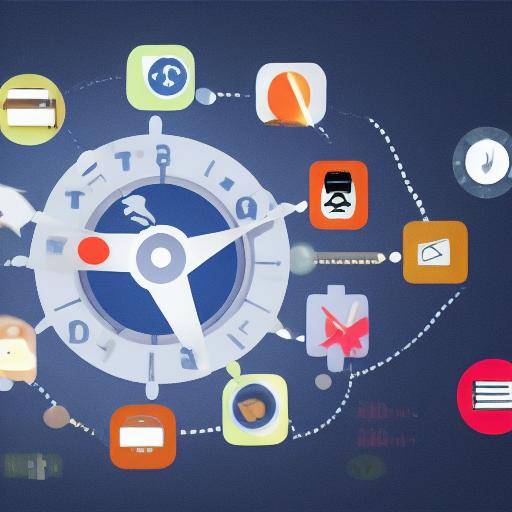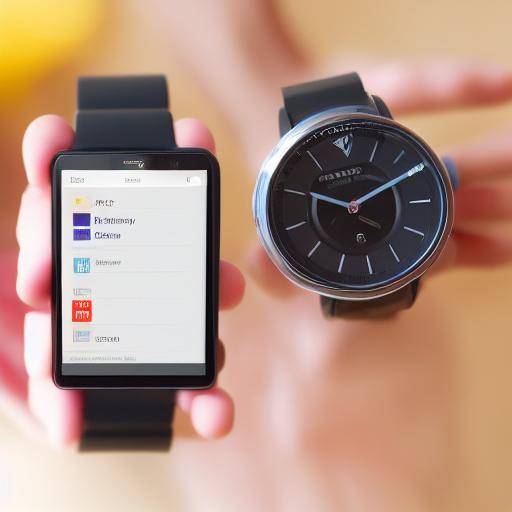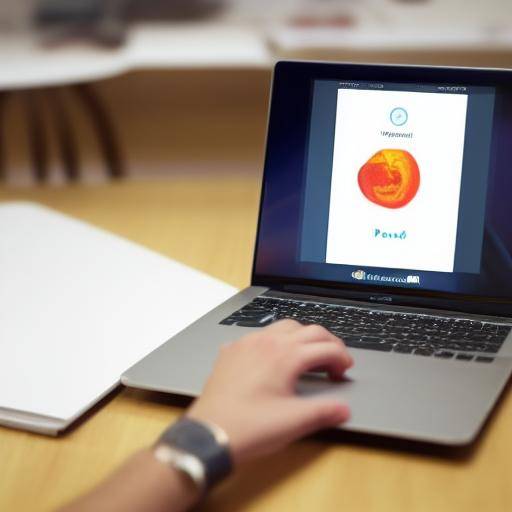
Introduction
Remote work has become an increasingly common practice in the current world. While it offers many advantages, it also presents challenges, especially in time management and productivity. In this article, we will explore how the Pomodoro technique, combined with effective time management, can optimize productivity in remote work. You will know the origins of the Pomodoro technique, its application in remote work, its relationship with time management and productivity, practical advice, expert analysis, future trends and much more.
History and background
The Pomodoro technique, created by Francesco Cirillo in the late 1980s, is based on the idea of dividing time in working intervals, followed by short breaks. The approach has been popularized by its ability to improve concentration and productivity. Over the years, the technique has evolved and adapted to the demands of remote work, becoming a valuable tool for those seeking to optimize their performance in non-traditional environments.
Detailed analysis
The Pomodoro technique has shown important benefits in time management, as it structure the day of work in focused time blocks. However, its application in distance work also presents unique challenges, such as the management of distractions and the maintenance of clear limits between work and personal life. The combination of Pomodoro technique with effective time management strategies can mitigate these challenges and maximize productivity, including in remote environments.
Comprehensive review
The use of Pomodoro technique in remote work has become a matter of interest to productivity experts, who have observed their positive effects on work efficiency and emotional well-being. As more companies adopt remote work, time optimization and productivity becomes critical for business success. Addressing this need with innovative approaches such as Pomodoro technique can make a significant difference in how organizations and individuals approach distance work.
Comparative analysis
Compared to other time management approaches and remote productivity, the Pomodoro technique offers a unique structure that allows professionals to focus more effectively on specific tasks. By contrasting the Pomodoro technique with other methods, such as the time block approach or 52/17, it is clear that each approach has its strengths and weaknesses. It is important to consider factors such as the nature of work, personal preferences and adaptability to remote environments by choosing the most appropriate approach.
Accessible practical advice and advice
By implementing the Pomodoro technique in remote work, it is essential to establish an enabling environment for concentration. Defining a dedicated workspace, minimizing interruptions and establishing clear limits between working time and personal time are key elements to maximize the effectiveness of the technique. In addition, the adaptation of Pomodoro intervals to individual needs and the adjustment of the duration of rests can further optimize their impact.
Industry perspectives and expert reviews
Productivity leaders and distance work often support Pomodoro as a valuable tool to improve job performance in a remote environment. Experts in Work Psychology and Work Performance have also investigated and validated the benefits of this technique. Its recommendations and testimonies offer a valuable perspective on how the Pomodoro technique can address the unique challenges of remote work.
Case Studies and Real Life Applications
Case studies showing practical applications of the Pomodoro technique in remote environments demonstrate their effectiveness in various labor contexts. From independent professionals to remote work teams in global companies, Pomodoro has demonstrated its ability to increase productivity, improve the quality of work and reduce exhaustion.
Future trends and predictions
As the adoption of remote work continues to increase, the application of time management techniques, such as the Pomodoro technique, is expected to be even more relevant. Advances in technology support, the evolution of labour structures and the growing awareness of the importance of working-life balance will continue to influence how productivity is addressed in remote environments. The Pomodoro technique has the potential to continue to evolve to adapt to these transformations.
Conclusion
In short, the Pomodoro technique offers an effective methodology for managing time and increasing productivity, both in traditional and remote working environments. Its ability to improve concentration, split work into manageable blocks and build efficiency makes it an attractive choice for those who seek to maximize their performance in a remote environment. By combining it with solid time management, the Pomodoro technique can provide significant benefits both individually and organizationally.
Frequently asked questions
Is the Pomodoro technique suitable for all types of remote work?
The Pomodoro technique is adaptable to most remote works, although some activities that require long periods of uninterrupted attention may need adjustments. The key is to experiment with the duration of work and rest intervals to meet the specific needs of each task.
What are the most significant benefits of combining Pomodoro technique with time management in remote work?
By combining the Pomodoro technique with time management strategies, a greater organization, focus and control of tasks is achieved, resulting in increased productivity, stress reduction and a sense of achievement when completing tasks.
How can I avoid external interruptions by implementing the Pomodoro technique in remote work?
Creating a peaceful working environment, clearly communicating the focus and hours of rest to colleagues and family members, and using distractions blocking tools can be effective strategies to minimize disruptions during the working intervals of the Pomodoro technique.
Are there tools or applications recommended to manage the Pomodoro technique in remote environments?
Yes, there are numerous applications and instruments specifically designed for the implementation of the Pomodoro technique, which include timers, activity records and statistics for better monitoring of time and work performance.
What role does self-discipline play in the success of Pomodoro technique in remote work?
Self-discipline is essential to make the most of the Pomodoro technique in remote work. Establishing and following a calendar, resisting the temptation of distractions and maintaining coherence in the application of the technique are key elements for its effectiveness.
Are there recommended variations of Pomodoro technique to adapt to remote work?
Yes, several variations can be adapted to the specific needs of remote working environments. These variations may include adjustments in the duration of work and rest intervals, the inclusion of active pauses and the incorporation of moments for virtual social interaction as part of breaks.
In conclusion, the Pomodoro technique offers a proven methodology to increase productivity and time management in remote working environments. By understanding their history, applications, benefits and challenges, remote professionals can make the most of this technique to improve their work performance. Maintaining a balance between Pomodoro technique, time management and remote work can be key to optimal productivity in the current working world.
With valuable information and practical advice, it is possible to effectively implement the Pomodoro technique in remote environments, maximizing productivity and well-being. While each working context presents its specific challenges, the combination of the Pomodoro technique with proper time management offers tangible benefits for both individual professionals and organizations as a whole.






















































